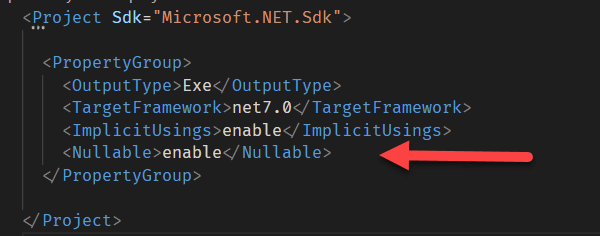Required Keyword In C# 11 & .NET 7
[C#, .NET]
One of the improvements in .NET was the record.
This allows you to create a type like this:
public class Person
{
public string FirstName { get; init; }
public string Surname { get; init; }
}
This allows you to create a Person like this:
var person = new Person() { FirstName = "James", Surname = "Bond" };
The init keyword here means that once you have created the Person, you can’t change any of its properties - they are read-only.
This has several practical uses in writing predictable and maintainable code.
It does, however, present a few problems.
1. Nullable Checks
The first thing you will notice is your compiler will complain about enforcement of non-null values. You will get these two warnings when you build the code:
warning CS8618: Non-nullable property 'FirstName' must contain a non-null
value when exiting constructor. Consider declaring the property as nullable
And this one:
warning CS8618: Non-nullable property 'Surname' must contain a non-null va
lue when exiting constructor. Consider declaring the property as nullable.
The compiler is complaining that it is possible for those properties to be null.
There are two ways around this:
First, you can turn off this warning globally in your .csproj file.

Change
<Nullable>enable</Nullable>
to
<Nullable>disable</Nullable>
The problem with this solution is it turns off all those warnings that could potentially save you lots of subtle bugs and errors.
The other solution is to tell the compiler that you are going to take responsibility for those properties not being null.
You do this by providing a default value of your property indicating it is not null - default!
public class Person
{
public string FirstName { get; init; } = default!;
public string Surname { get; init; } = default!;
}
2. Invalid Object Creation
The other problem is more subtle.
Much as you are meant to create a Person like this:
var person = new Person() { FirstName = "James", Surname = "Bond" };
You can validly do this:
var person = new Person();
This will create a Person with the FirstName and Surname set to default string values. This may be semantically valid, but such an object is meaningless.
You can try to fix this by creating a private default constructor.
public class Person
{
public string FirstName { get; init; } = default!;
public string Surname { get; init; } = default!;
private Person(){}
}
But this breaks the traditional construction of the object, as you can no longer do this:
var person = new Person() { FirstName = "James", Surname = "Bond" };
You therefore have to write a constructor to properly create the object.
public class Person
{
public string FirstName { get; }
public string Surname { get; }
private Person() { }
public Person(string firstName, string surname) => (FirstName, Surname) = (firstName, surname);
}
So now the only way to create a Person is like this:
var person = Person(firstName: "James", surname: "Bond");
This works perfectly, but we have had to write a lot of boilerplate code to protect the sanctity of the type.
A new keyword has been introduced to address this problem: the required keyword.
This keyword instructs the compiler that the property is required to be set in the object initializer or constructor.
We can re-write our class as follows.
public class Person
{
public required string FirstName { get; init; }
public required string Surname { get; init; }
}
You can attempt to create a person without setting any of the properties.
var person = new Person();
If you do, you will get this error:

What is handy is you will also get an error if you forget or otherwise emit one of the properties.

In other words, you must set all the values marked required.
With this keyword we can reduce the amounts of boilerplate code required to enforce behaviour.
The code is in my Github.
Happy hacking!